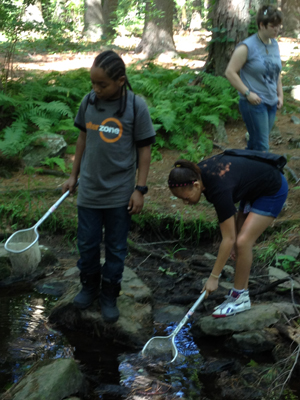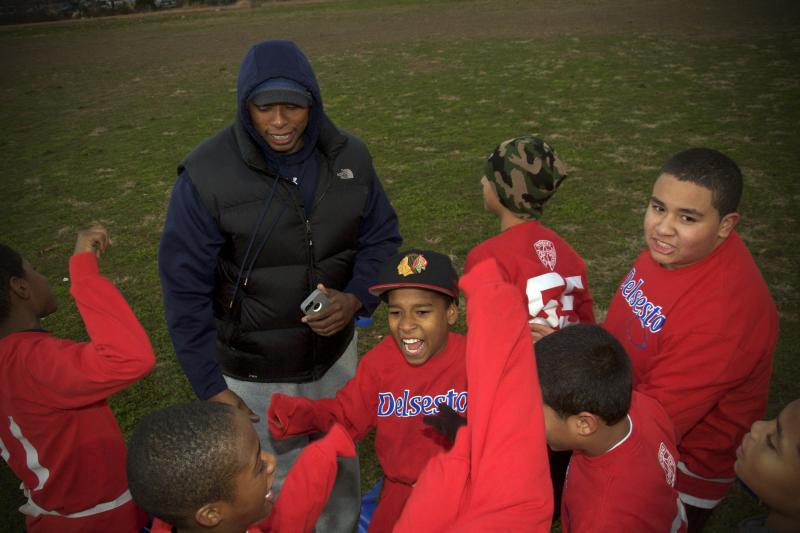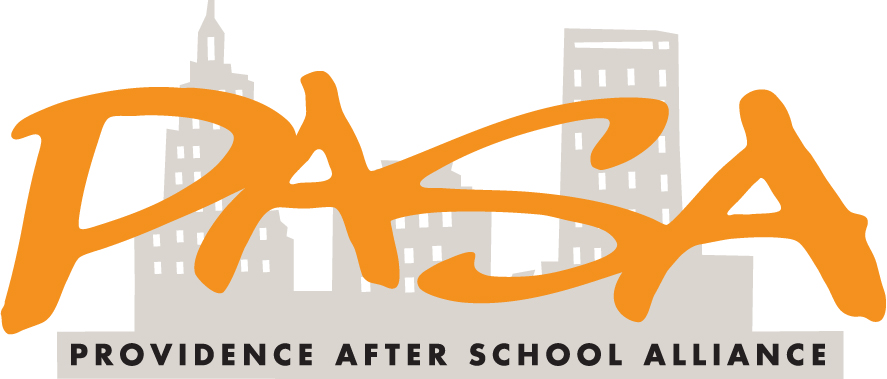
By Dylan Scott
Originally Posted in Governing Magazine March 7th, 2013
“Maybe it sucks,” Hillary Salmons, executive director of the Providence After School Alliance, told the audience at a conference last month centered on after-school programs and why attendance at some is so low. “Maybe the kids aren’t coming for a reason.”
It was striking honesty from a local leader, but one spoken from experience. Salmons, with a directive from then-Mayor David Cicilline, oversaw the launch of the Rhode Island capital city’s AfterZone initiative for middle schools in 2005. It was a reimagining for what an after-school program should look like. An attempt to take a program that was held in one location with a rigid format and transform it into a citywide system that offers something for a variety of interests and appeals to students’ sense of creativity and individuality.
Salmons and her colleagues accomplished that through the ‘zone’ concept. The city was divided into three zones, each offering distinct menus of programs based out of one school in each zone. One might focus on music and the arts; another might revolve around physical activity and sports. The school year was broken up into three sessions, so students could have opportunities to try different things. The three anchor schools just served as a base, as field trips to nearby libraries or recreational centers became an integral part of the program. More than 100 groups contributed to the initiative in one form or another. The alliance has also set rigorous quality standards and established frequent assessments to ensure the needs of its “customers,” as Salmons calls them, are being met.
In the years since, Providence has become a model for effective after-school systems. Tens of thousands of the city’s youth have participated, and they’ve proven to be absent less and score higher on standardized tests than their peers not in the program. The alliance has started a similar system for high school students, ensuring continuity for the middle schoolers who have moved up and opening up opportunities for a new segment of students.
The Wallace Foundation, which promotes best practices for after-school programs, has highlighted the efforts in Providence. The alliance has also been working to spread its ideas by hosting symposiums with other local leaders from Nashville, Tenn., New Orleans and Omaha, Neb., just to name a few.
Governing spoke with Salmons about her experience in Providence, where she thinks the after-school movement is headed, and how local officials can make sure their programs don’t, in her own words, “suck.” This transcript has been edited and condensed for clarity.
Let’s start with the basics. It sounds like one of the biggest challenges is getting students to show up. How have you tried to accomplish that in Providence?
Hillary Salmons (HS): You have to look at all these different students’ different interests and you have to pay attention to what the research and, just as important, your students are telling you. Figure out what’s leading to success. So if you have four sports programs that are basically the same design but one shows fluctuation or the girls all bailed, you can go back to that first week and say, ‘Hey, what happened? How do we shore up your program?’, so that word doesn’t get on the playground that ‘Hey, this program’s no good.’ Then we can work with the instructor to try to liven it up and make sure the youth are engaged.
And you have to create a buzz around your program. Our process is sort of like a recruitment fair, where the students meet  the instructors. A sixth-grader goes around to all the tables and looks at videos and sees the products and figures out with their peers: ‘What are you doing? What are you doing? Let’s do it together.’ That’s the beginning of the session. Then at the end of each of the sessions, there’s a showcase for students to show their work so the young people see, ‘Hey, that kid who I really think is cool built a go-kart or did some sort of an arts project and built a greenhouse. That’s really cool. Or rugby, that’s a cool sport. I want to try that next time.’ So it’s a promotional way of young people marketing to each other.
the instructors. A sixth-grader goes around to all the tables and looks at videos and sees the products and figures out with their peers: ‘What are you doing? What are you doing? Let’s do it together.’ That’s the beginning of the session. Then at the end of each of the sessions, there’s a showcase for students to show their work so the young people see, ‘Hey, that kid who I really think is cool built a go-kart or did some sort of an arts project and built a greenhouse. That’s really cool. Or rugby, that’s a cool sport. I want to try that next time.’ So it’s a promotional way of young people marketing to each other.
Young people are really discerning when they see that their friends are motivated. If they’re talking about having cooked a crazy Chinese meal and describing it to each other, then that shows really good engagement.
Implicit in all of this is the idea that it’s not necessarily very easy to craft an after-school model that’s attractive to adolescents. Why do you think that is?
HS: Getting 100 different programs to be consistently good is in and of itself a challenge because a lot of groups compete with each other. So getting them to agree on what quality looks like and then being able to assess and self reflect is hard. But if they know that stuff is not punitive, they’re more likely to engage in that process with us. Getting public-private systems to work and getting people to really take effective action is often tricky, but I think by focusing on quality and getting everybody to work together to support each other is key. They go to professional development together. They have agreed on the definition of quality. They’ve agreed to use a self-assessment tool. It builds a reflective culture across different organization lines. But facilitating reflection and awareness takes a lot longer than requiring people to meet criteria. That more punitive approach is faster, but it doesn’t get complete ownership. It just takes more time to do things collectively.
We’re also trying to connect across generational and socioeconomic lines. We’re working with urban youth, who have a great deal of cultural diversity and quite frankly, they’re in failing schools. Providence has one of the highest child poverty rates for a city of its size. We have a huge amount of adversity in these young people’s lives, and they’re really coping with a lot of stress factors at home and I think image issues in terms of being in urban schools that are struggling. So creating a positive, can-do urban culture with a hip-hop-oriented brand was important. We needed to be sure that we had a brand that they could identify with, something that was cool.
That doesn’t mean it’s not challenging or intellectual or full of energy. But we just had to make sure that we also built some context around the kids being able to discover these new things. They may live a half mile from the bay, but they may not realize that. So their first inclination might not be to pick the aquatic science project where you go out on a boat in the bay because they were more interested in things they related to. But by going through this process of sharing and promoting, now young people select a lot more diverse stuff than they did in the early years.
Obviously, the alliance is an independent nonprofit organization, but you were founded under the leadership of a mayor. You work with your school district. What would you say is state and local government’s role in supporting and facilitating initiatives like yours?
HS: I think the public-private partnership between mayors, city hall, superintendents and the nonprofit community are always easier said than done. But I think that collective, higher-level leadership is important. I think that collective body has to focus on realistic outcomes to be achieved. If you’re trying to improve math scores in two years, that may not be the perfect niche for after-school programs. The students may need more social or emotional builders, team-oriented things or sports or arts — some of the things that have been weeded out of schools that then makes them more excited about coming. So you have to make sure everybody agrees on what we can do and what we need to do to measure and mobilize the assets that we have.
I think it’s important that the community groups think about an intermediary organization or staff or structure like the alliance, because you need to convene people and you need to leverage new resources. You can’t just be reshuffling the deck chairs. You can’t say, ‘Okay, we’ve only got this amount of money, we’re going to take it from one place and put it in another place.’ That’s not going to help anybody.
Then you have to focus on youth experiences and quality. How do you create quality experiences? How do we agree on what quality looks like for young people? What is developmentally right for what age? What you do for elementary school, high school and middle school is different. It takes a while to get a collective body of adults to recognize and understand that.
Lastly, you have to bridge cultural divides. Schools and the nonprofit sector have different cultures. Teachers in schools have to be accountable to a test. That doesn’t mean they don’t care about youth development and these broader objectives. I think more and more do. I think they realize that to achieve academic goals, they’ve got to work on the social and emotional side. So quite frankly, you’ve got to think about the fun stuff.
